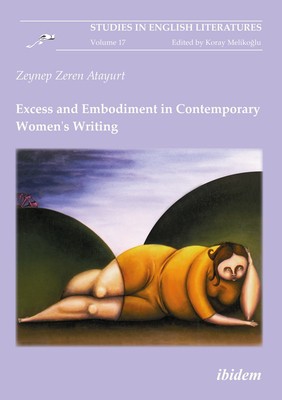
- We will send in 10–14 business days.
- Author: Zeynep Atayurt
- Publisher: Ibidem Press
- ISBN-10: 389821978X
- ISBN-13: 9783898219785
- Format: 14.8 x 21 x 1.1 cm, minkšti viršeliai
- Language: English
- SAVE -10% with code: EXTRA
Excess and Embodiment in Contemporary Women's Writing (e-book) (used book) | bookbook.eu
Reviews
Description
The 'obese' female body has often been portrayed as the 'other' to the slender body. However, this process of 'othering', or viewing as different, has created a repressive discourse, where 'excess' has increasingly come to be studied as a 'physical abnormality' or a signifier of a 'personality defect' in contemporary Western society. This book engages with the multifarious re-imaginings of the 'excessive' embodiment in contemporary women's writing, drawing specifically on the construction of this form of embodiment in the works of Fay Weldon, Jeanette Winterson, Margaret Atwood, Claude Tardat, and Judith Moore, whose texts offer a distinct literary response to the rigidly homogeneous and limiting representations of fatness, while prompting heterogeneous approaches to reading the 'excessive' female embodiment.
EXTRA 10 % discount with code: EXTRA
The promotion ends in 22d.19:49:48
The discount code is valid when purchasing from 10 €. Discounts do not stack.
- Author: Zeynep Atayurt
- Publisher: Ibidem Press
- ISBN-10: 389821978X
- ISBN-13: 9783898219785
- Format: 14.8 x 21 x 1.1 cm, minkšti viršeliai
- Language: English English
The 'obese' female body has often been portrayed as the 'other' to the slender body. However, this process of 'othering', or viewing as different, has created a repressive discourse, where 'excess' has increasingly come to be studied as a 'physical abnormality' or a signifier of a 'personality defect' in contemporary Western society. This book engages with the multifarious re-imaginings of the 'excessive' embodiment in contemporary women's writing, drawing specifically on the construction of this form of embodiment in the works of Fay Weldon, Jeanette Winterson, Margaret Atwood, Claude Tardat, and Judith Moore, whose texts offer a distinct literary response to the rigidly homogeneous and limiting representations of fatness, while prompting heterogeneous approaches to reading the 'excessive' female embodiment.


Reviews